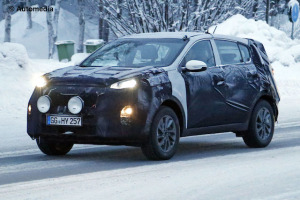
Hyundai has gone back to the roots of its SUV family by rechristening the ix35 the Tucson to align it more closely with its bigger brother the Santa Fe. The new Tucson – the third-generation – will be unveiled at the Geneva motor show next month and go on sale in New Zealand later this year. Hyundai describes it as a “step change, a completely new vehicle, not a direct replacement for the ix35.” One of its European executives said: ““We want this car to make you think a little bit differently about Hyundai.” 


